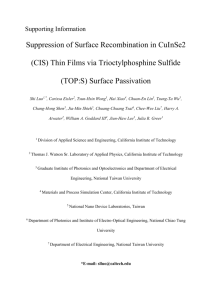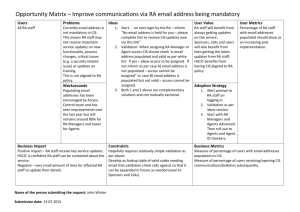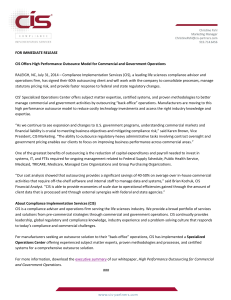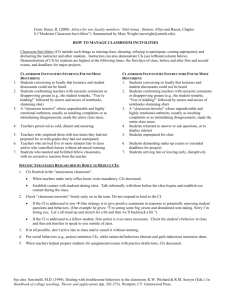Electronic supplementary material
advertisement
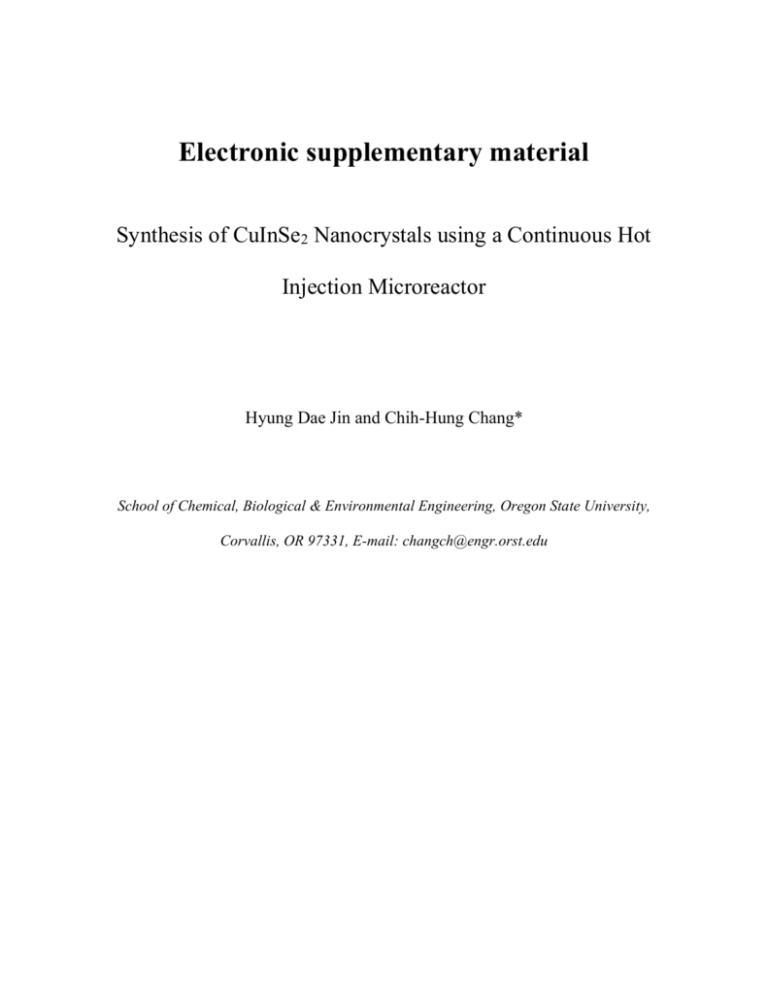
Electronic supplementary material Synthesis of CuInSe2 Nanocrystals using a Continuous Hot Injection Microreactor Hyung Dae Jin and Chih-Hung Chang* School of Chemical, Biological & Environmental Engineering, Oregon State University, Corvallis, OR 97331, E-mail: changch@engr.orst.edu The simulated CuInSe2 powder XRD patterns were obtained using the CaRIne Crystallography 3.1 program. Figure S1. Crystal structures of a) Chalcopyrite (I-42d, a=5.782, c=11.619), and b) Sphalerite (F43m, a=5.86) CIS. Atomic coordinates (a) (b) Figure S2. Simulated XRD patterns of CIS nanocrystals of a) Chalcopyrite, and b) Sphalerite. Figure S3. Binary compounds XRD and EDS results. a) In2Se3 and b) Cu2Se at 8 min reaction time Figure S4. Experimental XRD patterns of (a) 0.23:0.45, (b) 0.11:0.34, (c) 0.23:0.34, and (d) 0.34:0.34 mmol/ml at 8 min reaction time. Surfactant ratio of OA:TOP is 4:1. Inset figure shows peaks are separated. Figure S5. Diagram of mixer structure Figure S6. Cu:In:Se ratio of CIS QDs with median sizes of (a) 3.7 nm, (b) 2.6 nm, (c) 3.5 nm, and (d) 4.1 nm by EDS data Figure S7. TGA result of CIS NCs with median sizes of (a) 3.7 nm, (b) 2.6 nm, (c) 3.5 nm, and (d) 4.1 nm Table S1. Composition of CIS obtained by EDS with reaction times Table S2. Composition of CIS obtained by EDS with different concentrations at 8 min reaction time



